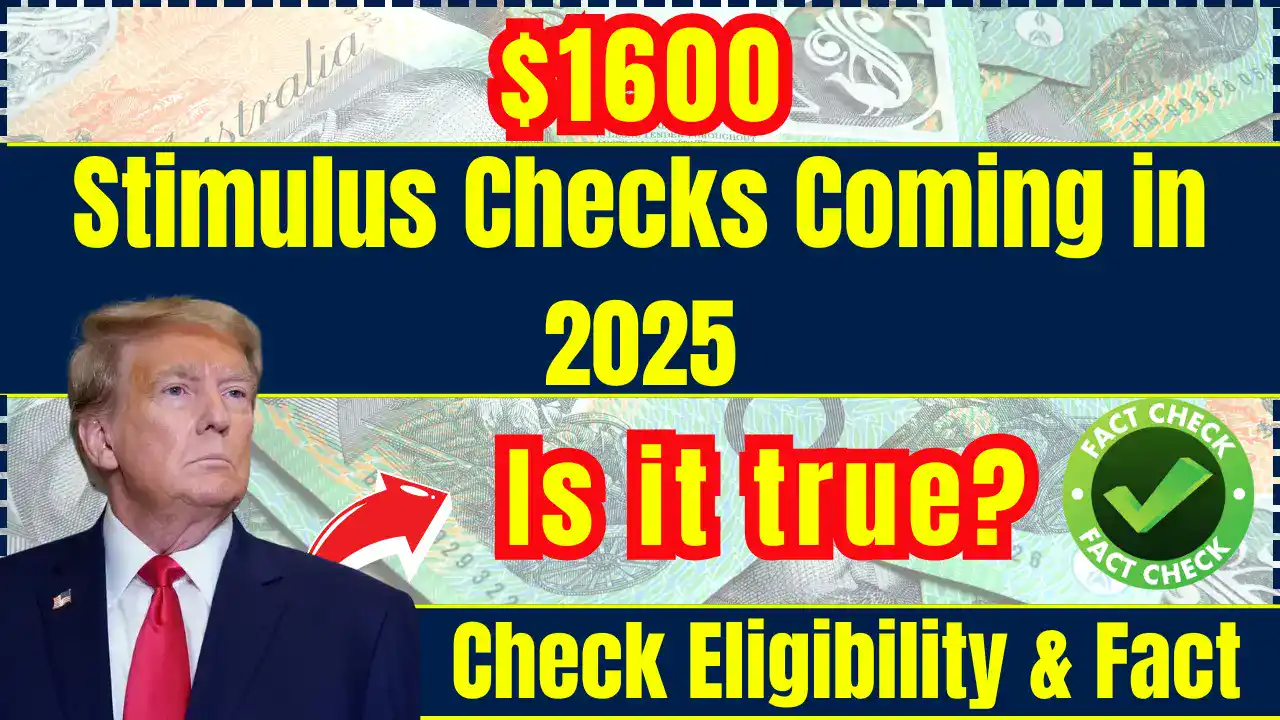$1600 Stimulus Checks Coming in December 2025? Here’s What You NEED to Know – Fact or Fiction?
Rumors about $1,600 stimulus checks for 2025 have been circulating widely, creating confusion and raising false expectations. While the amount sounds appealing, there has been no official confirmation from the federal government about issuing such payments. Here’s a closer look at the current state of stimulus payments and other potential financial assistance options.

Federal Stimulus Payments: Fact vs. Fiction
The U.S. federal government has not authorized any new stimulus checks since the American Rescue Plan Act of 2021, which provided up to $1,400 per eligible individual. These payments were part of the COVID-19 relief efforts to support households during the pandemic. Since then, no additional federal Economic Impact Payments (EIPs) have been approved. Updates on any potential federal stimulus payments would be formally announced on IRS.gov, the most reliable source for this information.
State-Level Relief Programs
Although federal stimulus checks are not currently on the table, several states have implemented their relief programs tailored to address specific needs. These state initiatives often target groups such as low-income households, seniors, or residents dealing with economic hardship.
- California’s Middle-Class Tax Refund: During 2022 and early 2023, California provided payments ranging from $200 to $1,050 to eligible residents. While this program has ended, it demonstrated how states can step in to offer financial assistance.
Residents can stay informed about future programs by visiting the California Franchise Tax Board’s website. - Colorado’s TABOR Refund: Under the Taxpayer’s Bill of Rights (TABOR) Refund program, Colorado issued direct payments of $750 to individuals and $1,500 to joint filers in 2022, redistributing surplus state revenue. Keep an eye on announcements from the Colorado Department of Revenue for updates on similar initiatives.
- Maine’s Energy Relief Payments: In 2022, Maine provided $850 checks to help households manage rising energy costs. These payments aimed to address inflation and utility price hikes. Residents should monitor the state’s website for news about upcoming energy relief programs.
How to Verify Stimulus Payment Claims
To avoid falling victim to misinformation or scams, follow these steps:
- Check Official Sources:
- Visit IRS.gov for federal updates on stimulus payments.
- For state programs, refer to your state’s Department of Revenue or equivalent agency.
- Beware of Scams:
- Ignore unsolicited emails, texts, or calls promising stimulus checks.
- Avoid sharing personal or financial details with unverified sources.
- Do not click on suspicious links or download attachments.
- Rely on Trusted News Outlets: Reputable news organizations provide accurate and verified government updates. Avoid relying on social media or unverified online discussions.
What to Do If You Need Financial Help
While federal stimulus checks are not currently available, there are other avenues for assistance:
- Government Programs:
- SNAP (Supplemental Nutrition Assistance Program): Provides food assistance to low-income households.
- LIHEAP (Low Income Home Energy Assistance Program): Offers help with utility bills.
- Nonprofit Resources:
- United Way 211: Offers emergency financial assistance and counseling.
- Salvation Army: Provides aid for rent, utilities, and living expenses.
- Local Initiatives: Check with city or county offices for community-specific financial relief programs.

The $1,600 stimulus check rumor seems to stem from outdated references and speculation, amplified by social media. Until official announcements are made, rely on credible sources and explore available support options to manage financial challenges.


Comments are closed, but trackbacks and pingbacks are open.